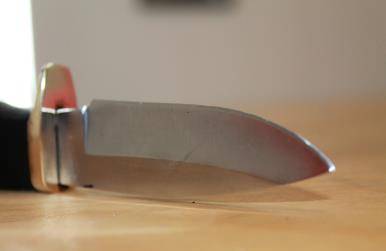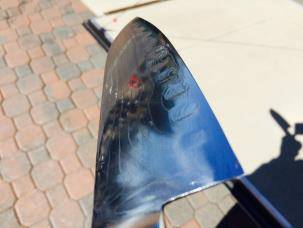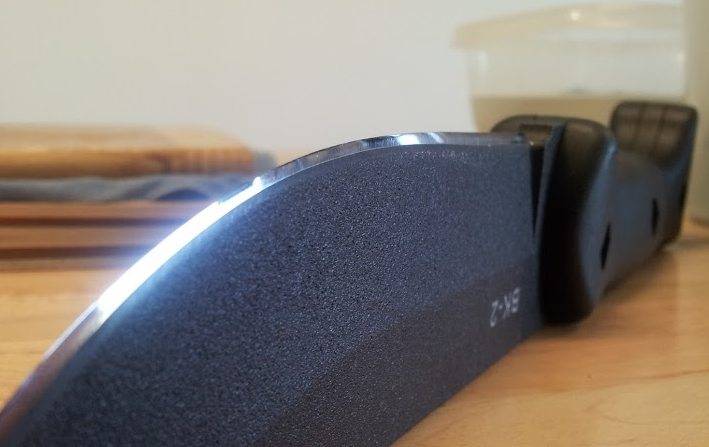Interviews
Our Interview with BurrBenders: Sharpening Technique and More
18.07.2016
Here’s our new interview with Jimmie from BurrBenders. We had the opportunity to ask him some questions about his sharpening business.
1. How did you start, and why did you get involved in the knife sharpening business?
[box size=”large”]I started sharpening at the age of 15 or 16 (I’m 47 now), my father owned a large construction firm and everyday at lunch an “ex bootlegger” would sit down and teach me to sharpen on oil stones. I started Burrbenders after I retired from daily operations of the several other businesses I own/owned. [/box]
2. What were the biggest struggles when you started?
[box size=”large”]There were never any “struggles”, set your mind on a goal, overcome all obstacles in your way and learn as much as you can.[/box]

3. What distinguishes you from other businesses in your category?
[box size=”large”]We specialize in “higher end” kitchen knives, in a typical week we see a few hundred Shuns, Miyabis, UX10s, Glestains and every conceivable Japanese knife you can imagine.[/box]
4. Currently, what’s your business biggest challenge?
[box size=”large”]Managing growth.[/box]
5. What’s the most popular service that you offer?
[box size=”large”]Knife sharpening is 10 to 1 the biggest selling service we offer.[/box]

6. Are you still improving your technique? if yes, how?
[box size=”large”]Absolutely, I once spent a year trying to figure out a particular finish I saw on a knife. I rarely read anything about sharpening, nor do I watch others sharpen. Sharpening is a lifelong journey of trial and error.. Most quality sharpeners have a “style” I can normally identify them by how they sharpen, I always try to figure out their methods and most importantly, figure out why the customer is coming to me instead of them. [/box]
7. How should a beginner start sharpening knives?
[box size=”large”]Think! Learn as much as you can about what makes a knife cut, how people use knives and why they use them. Learn steels and why the Rockwell Scale is so important to how we sharpen. Forget about touching a knife to a stone until you learn about the geometry that makes a knife a knife. After that, it all falls into place.[/box]
8. What equipment would you recommend to a newbie knife sharpener?
[box size=”large”]A decent set of Japanese water stones…[/box]
9. What do you think is the most common mistake beginner knife sharpeners make?
[box size=”large”]Edge angles! Forget about them! I always get in trouble when I say this around amateur sharpeners that have spent hours and hours figuring out how to put the perfect 18 degree edge on a knife. Every knife is different in so many ways, steel quality, use, geometry, ect… Study the knife, it will tell you a lot, talk to the customer, they both will tell you what type of edge is needed. [/box]

10. Tell us something people might be surprised to learn about you or your business.
[box size=”large”]
We deal with many collectors that buy insanely expensive knives and swords from Europe and Asia. I once spent a month sharpening a “priceless Katana” and a 14th century European sword.. [/box]
11. is starting with cheap knives a good idea for beginners? Why?
[box size=”large”]
I wouldn’t start with anything under a Wusthof classic, really cheap knives have horrible steel and a very thick edge, not a great training tool. Most Japanese knives that we see now a days are very advanced for most beginners. I always recommend buying different types of kitchen knives to practice on and as you learn, learn how to fix your mistakes. After all, that’s really what knife sharpening is, fixing the abuse and mistakes of others.[/box]
12. Can you tell us more about your sharpening process and techniques?
[box size=”large”]
As I tell my customers, we have 6 different ways of sharpening and 32 different edges and finishes we can put on a knife.
So the six different ways are; 1, hand sharpening with stones. 2, jig sharpening (edge pro.. Ect) 3. Belt sanders of varying grits. 4, Honing (sometimes honing is all a knife needs) 5, free hand water wheel sharpening. Finally the 6th way is combinations of some or all of the above that we have developed over the years to give individual knives the sharpest edges possible.
Example. A badly damaged Shun comes in, we would most likely grind the edge flat with a 400 grit belt to remove chips in the edge, set the edge angles with the same belt then move over to Japanese water stones to define and refine the edge, then hone. OR a $12k William Henry comes in with a broken tip, I would tape the entire knife off, fix the tip with a water cooled belt, set the initial edge angle on a jig system then move to the stones for polish and honing.
My favorite and most preferred sharpening method is “freehand” sharpening on belts. I know everyone prefers “hand sharpening on stones”… When you sharpen tens of thousands of knives a year like I do you can easily put your stone skills to good use on belts.
As for the 32 different edges, they run from what we call a factory edge to a 100k polished edge.[/box]









